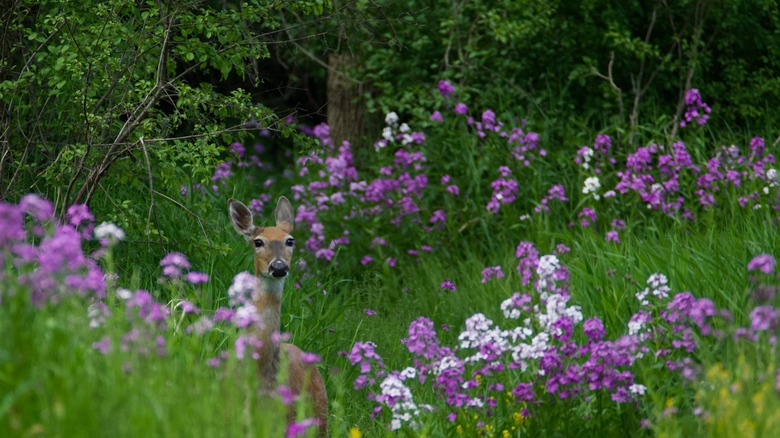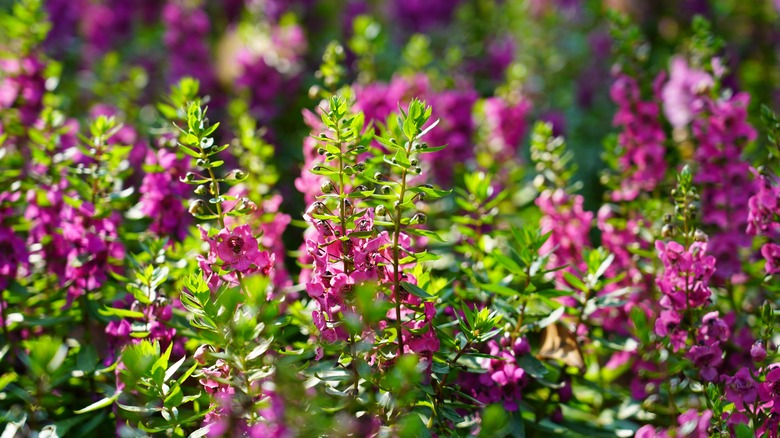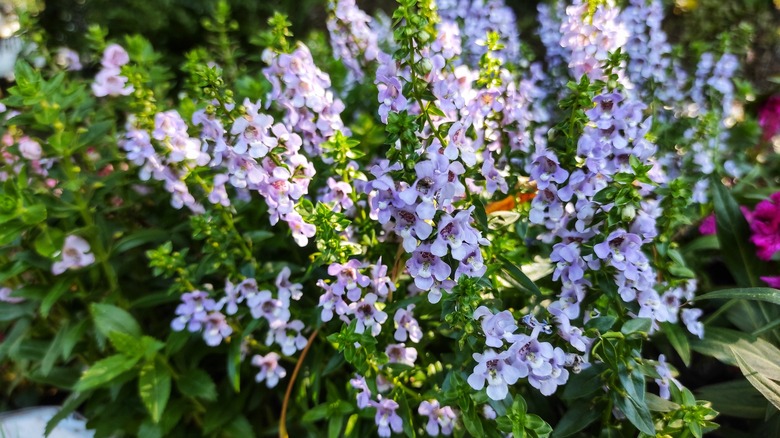This Deer-Resistant Summer Flower Will Fill Your Garden With Sweet Fragrance
Creating a stunning summer flower garden that will fill your senses with gorgeous fragrance can be challenging when you have to contend with deer and other garden visitors that want to happily munch on your precious flowers. There's nothing worse than stepping out into your garden on a summer's morning to admire your blooms than to find they've been decimated overnight by visiting deer. The best solution to this is growing delightful summer flowers that the deer simply don't like. One of these is the stunning summer snapdragon with its delicious grape-like fragrance.
While common snapdragons (Antirrhinum majus) have been popular flowers enjoyed by gardeners around the world for centuries, they don't particularly like the summer heat. On the other hand, summer snapdragons (Angelonia angustifolia) thrive in the hot weather as they're native to the West Indies, Mexico, and South America. Better yet, these gorgeous plants are not attractive to deer due to their lovely fragrance, simply because deer are sensitive to smell and will generally stay away from them. You can deer-proof your garden even further by growing gorgeous deer-resistant blue salvia flowers alongside your summer snapdragons.
What you need to know about this gorgeous summer flower
Angelonia angustifolia is related to common snapdragons and has similar flowers, but thinner stems with an open and spreading growth habit. In general, plants will reach a height of up to 18 inches. They can be grown as a perennial in USDA hardiness zones 9 through 11. Summer snapdragons are one of numerous flowering annuals that will last all summer and fill your garden with gorgeous fragrance and color. But. their deer resistance is what makes these flowers so beneficial to many gardeners. Deer generally don't like plants that are strongly scented, so they will stay away from summer snapdragons as long as there are other food sources for them to enjoy. Similarly, rabbits don't tend to feed on these flowers either.
The pretty flowers on summer snapdragons stand on tall spikes and make excellent cut flowers thanks to their sweet fragrance that will fill your home with a lovely aroma. The flowers bloom right through summer and into the fall, and there's no need to deadhead them. For hardy plants that will produce the most stunning blooms, take a look at the 'AngelMist' series, which has beautiful floral colors in white, lavender, purple, and pink. Other interesting cultivars include 'Angel Wing' and 'Angelface.' The lovely scented flowers will also attract pollinators and hummingbirds to your garden.
How to grow and care for summer snapdragons
Summer snapdragons love the heat and should be grown in a sunny location in your garden. They make excellent bedding plants for your borders and can also be grown in containers. The soil needs to be free-draining, and the plants, although quite drought-tolerant when fully established, will perform better when given adequate moisture during dry spells. Plus, if you have a problem with deer or rabbits feeding on your plants, you'll find that Angelonia is relatively safe due to its sweet fragrance, which deer and rabbits really don't like.
To get the best floral displays from these plants, incorporate some slow-release fertilizer into the soil before planting and then supplement them with liquid feed during the summer growing season. Although these plants don't need deadheading or pruning, if you cut them back after the first flowering, you'll speed up the growth of subsequent blooms. Cutting back your summer snapdragons is also a good idea if you're finding that the tall stems flop over late in the season. This will encourage new growth and you'll get additional blooms into the fall.
Summer snapdragons look amazing when grown en masse in your flower beds or along your borders, especially if you mix up the colors for a lovely, bright display. Space your plants around 12 to 16 inches apart. Angelonia flowers are also perfect for a sunny yard if you have pets because they're not toxic to animals or humans.


